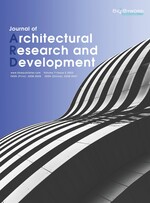Abstract
This paper takes Yangpu Waterfront, a famous industrial heritage belt in Shanghai (China), as the research
object, with the purpose of sorting out the identity transformation that this waterfront industrial area has experienced in the past century. Taking the comprehensive development on both sides of the Huangpu River carried out in Shanghai in the early 21st century as the dividing line, Yangpu Waterfront has also been reborn after the waterfront regeneration projects that have been in full swing in recent years. This identity change is reflected in physical settings, observable activities, and meanings. The article is based on historical research and current situation analysis, including a part of user satisfaction evaluations.
References
Yangpu District Compilation Committee, 1995, Yangpu District Local Chronicles, Shanghai Academy of Social Sciences Press, Shanghai.
Shen S, 2022, Protection and Adaptive Reuse of Industrial Heritage Under the Context of Urban Renewal —The Example of Yangpu Riverside Area in Shanghai. Study on Natural and Cultural Heritage, 7(02): 61–72.
Wu Y, 2021, Study on the Management of the “Industrial Rust Belt” on the Yangpu Riverfront in Shanghai. Old District Construction, 2021(18): 54–60.
Wang Y, 2021, Post Occupancy Evaluation of Built Environment of Industrial Heritage Transformation Creative Industrial Park——Take Qingdao Textile Valley as an Example, thesis, Qingdao University of Technology. https://kns.cnki.net/KCMS/detail/detail.aspx?dbname=CMFD202201&filename=1021882375.nh
Gazette of Shanghai Municipal People’s Government, 2017, Notice of the Shanghai Municipal People’s Government on the Issuance of the 13th Five-Year Plan for the Development of Areas on Both Sides of the Huangpu River (Shanghai Municipal Government Documents Vol.2016/99).
Shanghai Urban Space Art Season (SUSAS), 2019, Public Artworks. https://www.susas.com.cn/2019susas/
Lynch K, 1960, The Image of the City, MIT Press, Cambridge.
Relph E, 1975, Place and Placelessness, Pion, London.
Proshansky HM, Fabian AK, Kaminoff R, 1983, Place-Identity: Physical World Socialization of the Self. Journal of Environmental Psychology, 3(1): 57–83.
Boland P, Bronte J, Muir J, 2017, On the Waterfront: Neoliberal Urbanism and the Politics of Public Benefit. Cities, 2017(61): 117–127.
Marshall R, 2001, Waterfronts in Post-Industrial Cities, Spon Press, London.
Pang L, An Q, 2022, Urban Waterfront Space Research and Landscape Improvement Strategies Based on a Health Perspective: Taking Zhanhe in Pingdingshan City as an Example. Art and Design, 2(06): 67–68.
Hagerman C, 2007, Shaping Neighborhoods and Nature: Urban Political Ecologies of Urban Waterfront Transformations in Portland, Oregon. Cities, 24(4): 285–297.
China Hai Guan Zong Shui Wu Si Shu, 1887, Treaties, Conventions, etc., Between China and Foreign States, with a Chronological List of Treaties and of Regulations Based on Treaty Provisions, 1689-1886, Statistical Department of the Inspectorate General of Customs, https://iiif.lib.harvard.edu/manifests/view/drs:44645462$148i
Editorial Board of Shun Pao, 1928, The Two Programmes of Building Greater Shanghai. Shun Pao, 1982: 34.
Editorial Board of Shun Pao, 1875, Western Businessman to Set Up Water Company. Shun Pao, 1875: 2.
Wright T, 1991, Electric Power Production in Pre–1937 China. The China Quarterly, 1991(126): 356–363.
Editorial Board of Shun Pao, 1946, The Soul of Electric Shanghai. Shun Pao, 1946: 5.
Modern Economic News Agency, 1947, Statistics Feature 2: Comparative Table of Industrial Electricity Consumption in Shanghai, 1935, Modern Economic Newsletter: Weekly Supplement.
China Institute of Economic Statistics, 1938, Table 162: Shanghai Electric Power Company’s Generation Capacity, Monthly Journal of Economic Statistics.
Yang M, 1940, China’s Recent Industrial Waxing and Waning. Shun Pao, 1940: 5.
Mao J, 2006, Yang Shupu Industrial Zone Study, thesis, Shanghai Normal University.
Zhu B, Hu L, Xu S, 1984, Shanghai Industries and Shanghai Workers, Shanghai People Press, Shanghai.
Tai F, 1923, Hazards of Living Near a Factory. Shun Pao, 1923: 11.
Zhang X, 1947, Introduction to Industrial Effluent. Ta Kung Pao, 1947: 1.
Bu F, 1932, Yangtszepoo Factory. Minyou Semi-Monthly, 1932(2): 16–17.
Modern Economic News Agency, 1948, Important Economic News, Modern Economic Communications.
Wu J, Ding F, 2020, An Analysis of the Modern History and Characteristics of the Development of the Huangpu River Waterfront in Shanghai. Residential Technology, 2020(01): 1–9.
Government of the People’s Republic of China, 2001, Circular of the General Office of the State Council on the Opinions of the State Planning Commission on Several Policy Measures to Accelerate the Development of the Service Industry during the Tenth Five-Year Plan Period. http://www.gov.cn/zhengce/content/2016-10/11/content_5117403.htm
Shanghai Observer, 2022, Each Urban Space Art Season is a New Beginning. https://sghexport.shobserver.com/html/baijiahao/2022/03/09/679645.html
Han S, 2020, Zhang Ming: “Architects Touch Everyone with Professionalism and Redefine Urban Space,” ArchDaily, September 28, 2019. https://www.archdaily.cn/cn/931593/zhang-ming-jian-zhu-shi-yong-zhi-ye-jing-shen-gan-ongsuo-you-ren-zhong-xin-ding-yi-cheng-shi-kong-jian
Qin S, Zhang M, Zhang Z, 2020, From Industrial Heritage to Artistic Waterfront—Shaping and Activating the Publicity of Public Space in the Practice of the 5.5 km Waterfront Regeneration in the Main Exhibition Area of the 2019 Shanghai Urban Space Art Season. Time + Architecture, 2020(01): 80–87.
Zhang M, Zhang Z, Zhang J, et al., 2019, Baptized Revitalization—Regenerating the Public Space of Southern Yangpu Waterfront, Shanghai. Architectural Journal, 2019(08): 16–26.
Isa MI, Hedayati Marzbali M, Saad SN, 2022, Mediating Role of Place Identity in the Relationship Between Place Quality and User Satisfaction in Waterfronts: a Case Study of Penang, Malaysia. Journal of Place Management and Development, 15(2): 130–148.
